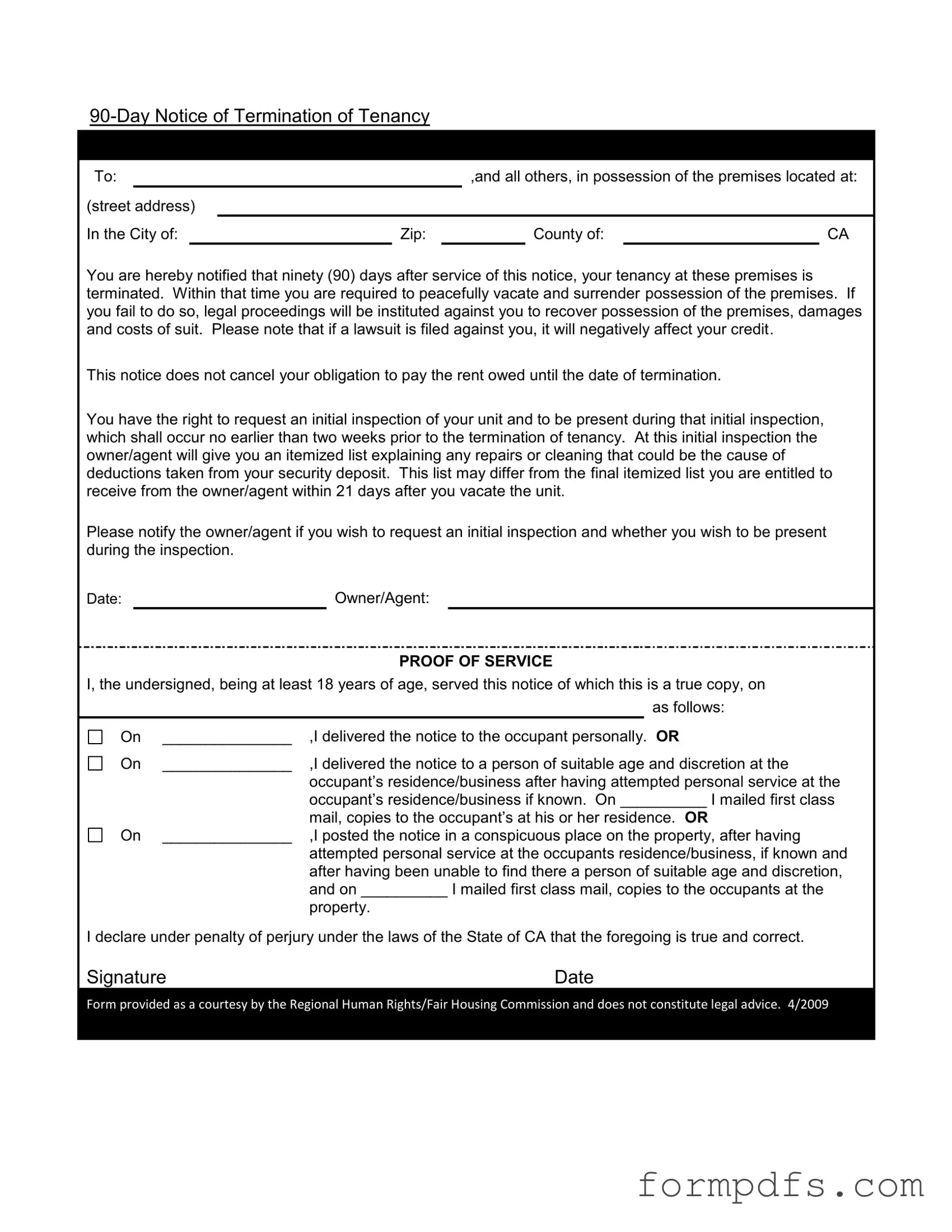When a landlord needs to terminate a tenancy in California, they often use the 90 Day Notice to Move Out form. This official document serves as a formal notification to tenants that they must vacate the premises within ninety days. The notice includes essential details such as the tenant's name, the property address, and the date the notice is served. It clearly states that failure to vacate may lead to legal proceedings, which could result in damages and costs, as well as negatively impact the tenant's credit. Additionally, the form emphasizes that the obligation to pay rent remains until the termination date. Tenants have the right to request an initial inspection of the unit, which allows them to be present and receive an itemized list of potential deductions from their security deposit. This inspection must occur no earlier than two weeks before the tenancy ends. The form also outlines the proper methods of service, ensuring that tenants receive the notice in a manner that complies with legal requirements. Understanding this notice is crucial for both landlords and tenants to navigate the complexities of rental agreements and ensure a smooth transition.
